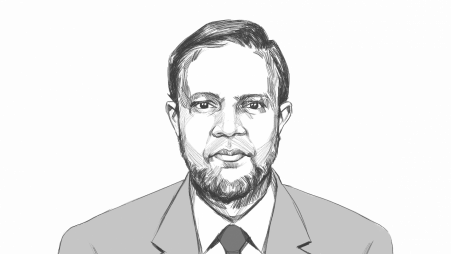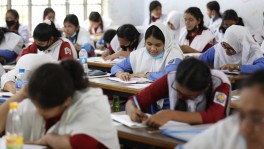The Corona Curved Economy of Eid ul Adha

Eid ul-Adha , or Feast of the Sacrifice , is celebrated worldwide to honor the willingness of Hazrat Ibrahim (pbh) to sacrifice his dearest son Ismail as an act of obedience to Allah, before He intervened to provide him with a sheep to sacrifice instead. The basis for the Eid al-Adha comes from the 196th verse of second Surah, Al Baqara ( The Cow) , and the word "Eid" appears in the fifth Sura al-Mai'da (The Table Spread), of the Qur'an, meaning 'solemn festival'. The days of Eid ul Adha are the 10th of Dhul Hijjah upto the 12th of Dhul Hijjah (3 days and 2 nights) sacrifice may take place until sunset on the 13th Day. In the Indian subcontinent the festival is known as Bakr-Id because of the tradition of sacrificing the goats.
The Eid ul-Adha in-effect exists around the sacrifice festivity, having an impact on socio-economic arena. Eid ul Adha is observed correspond with the performing Hajj by the financially able Muslims and the national economy has to transact a substantial amount, mostly in foreign currency on this instance. Due to Covid19 prevalence world wide , this year only 20 thousands Saudi residents are performing Hajj, none from Bangladesh as well as other countries are allowed . Performance of Hajj alone is a big basis of business mostly in foreign currency for a muslim majority country like Bangladesh . In 2019 , year before covid came , 1 lac 15 thousand 632 pilgrims took part in hajj from Bangladesh . Taking average cost per participant was half a million BDT, whopping total cost was Tk 5 thousand 780 crore, and the tantamount in foreign currency was US $ 680 million . The Hajj has been a major source of foreign currency income for the Saudi economy and an important foreign exchange expenses for other economy as well since the earliest days when the hajj was introduced. Bangladesh economy has had to handle banking transactions along with foreign exchanges and job creation in aide to hajj performers.
The third wave of covid is on the verge. The earlier two wave's appearance was not seen in the rural economy. As a border country of India, this time delta variant's disparaging presence in the village is on the rise. Covid snatched away hundreds of thousands of people's income pertaining to the Eid Ul Adha and hajj. On the occasion of Qurbani and Hajj, the likelihood of revamping Bangladesh's economy is now in doldrums. Curbing disparity, proper distribution of resources, window of employment opportunity for the lower and middle class can be notched up by leveraging this festival vide effective demarcation of income and expense. In the last 16 months Bangladesh missed dozens of festivals to regain the momentum of its economy. It was highly speculated that the economic climate will nascent in the next phase on the heels of last year's exacerbated situation. With this dream, pouring more funds this time may turn to drainage. That takes a heavy toll on the overall scenario. This is the landscape of how the festival's economy becomes gloomy to the prey of covid 19.
Sacrificing the cattle remain the central occupation in the Eid ul Adha leading to huge financial involvement and economic activities. In 2019, approx 85 lacs cows and 65 lacs goats were slaughtered as reported by Livestock Department , whereas data projected by Bangladesh Tanners Association the numbers were 38 lacs and 62 lacs respectively . Taking the latter data, cows transaction value registered Tk 17 thousand crore,(38 lacs cows @ Tk 45k average cost per cow) and on accounts of goats were Tk 2 thousand 600 crore (62 lacs goats @ Tk 4k average cost per goat), the total contribution to the business stood TK 19 to 20 thousands crore. As of now this year , due to COVID19 , the transaction might be dipped down to 45% of what was in 2019. Markets for spices and electronic ( refrigerators ) gadgets used to witness bumper sales hovering hundreds of billion taka ahead of Eid. The money market, which usually got volatile during the Eid festivals, remains calm in a fairly liquid position this time ahead of Eid. As the market now is in a liquid position because of a decline in imports and a rise in remittances.
The performance of Hajj and the sacrifice of cattle during Eid celebration, in essence, could generate money supply, expansionary in nature, promote trade and business, create job , and at large bring boom for the economy and competent macro management of such supply side economy could be crucial for the sustainable development as well as a reliever of the damages done by Covid in last 15 months . The management of cattle as well as hide and skin trading must have been reckoned to desired direction. The economy should have been fairly benefited from this important sector if a far-sighted plan is in place to handle border trade, have checked corruption, have seized the syndications. It has been a common observation that the Eid cattle market has no direction, it is left to three S -the syndicated traders, smugglers and snatchers. It was reported that syndicated traders had targeted a market of Tk 320 billion from Bangladesh in a year , used to earn this amount of money by exporting cow on credit and at the same time importing raw hides at lower prices through unofficial channel. As against smuggling of cow, they used to receive raw hides and bone , fuel, edible oil, gold, silver, cigarettes, jute. Thereby Bangladesh economy loses huge revenue and its own prospect of exporting leather and leather products abroad.. Although the government provides credit facilities to tanneries, no credit is given to hide merchants who face difficulties to run business. Ultimately the businessmen have to depend on smugglers who advance money for procurement of hides and skins.
However, given that the nation spend a substantial amount of cash for the Hajj and Eid festival, remittances poured in Bangladesh economy, a special business spree starts for transportation sector as a large number of people travel. Media reports confirm the magnitude of financial transaction marking the celebration of Eid in an economy of one hundred seventy five million population with US $ 2205 per capita GDP.
Dr Muhammad Abdul Mazid, former Secretary and Chairman, NBR, [email protected]


 Keep updated, follow The Business Standard's Google news channel
Keep updated, follow The Business Standard's Google news channel
















